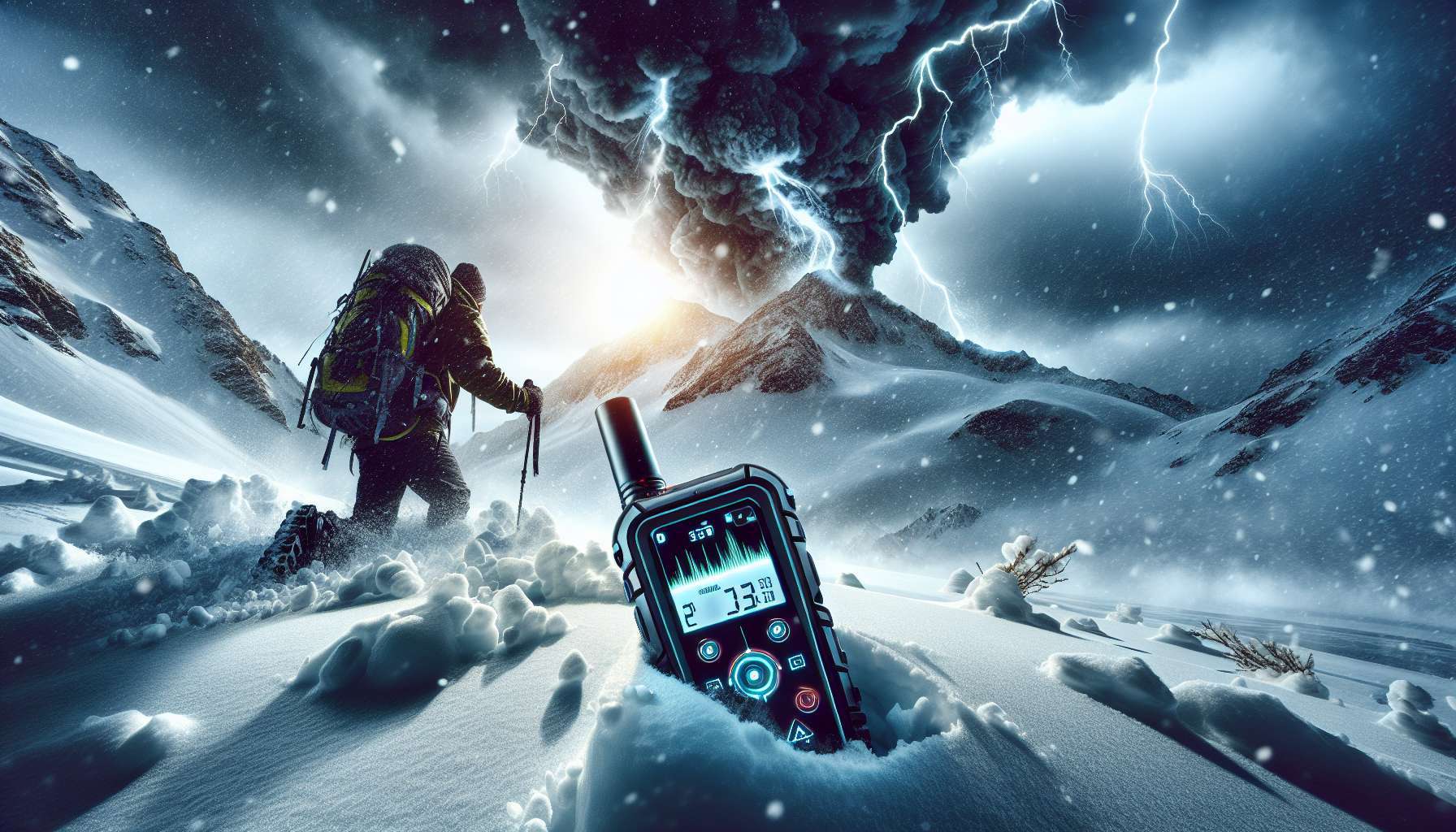Avalanche Transceivers: The Ultimate Guide
Imagine you’re out in the backcountry, surrounded by pristine snow-capped mountains, enjoying the thrill of skiing or snowboarding. Suddenly, a deafening roar echoes through the valley as an avalanche hurtles down the slope. In the chaos and confusion, how do you ensure your safety and the safety of your companions? This is where avalanche transceivers come into play.
Avalanche transceivers, also known as avalanche beacons, are vital tools for backcountry enthusiasts to locate and rescue buried victims in the event of an avalanche. In this comprehensive guide, we will delve into the world of avalanche transceivers, exploring their history, technology, usage, and importance in avalanche safety. Let’s unravel the mysteries of these life-saving devices and understand how they have revolutionized the way we approach backcountry adventures.
The Evolution of Avalanche Transceivers
Before we dive into the nitty-gritty details of avalanche transceivers, it’s essential to understand their evolution over the years. The concept of avalanche transceivers dates back to the early 1960s when Swiss engineer Bruno Engler invented the first device capable of transmitting and receiving signals to locate buried victims.
Since then, avalanche transceivers have undergone significant advancements in technology, design, and functionality. Modern transceivers are equipped with multiple antennas, digital displays, and sophisticated signal processing algorithms to enhance search and rescue operations in avalanche scenarios. These advancements have revolutionized the field of avalanche safety, making it easier and more efficient to locate buried victims.
How Avalanche Transceivers Work
At the core of avalanche transceivers is the principle of radio frequency (RF) technology. Transceivers operate on a specific frequency band (457 kHz for standard transceivers) to transmit and receive signals between devices. When a person is buried in an avalanche, their transceiver switches from transmit mode to receive mode, allowing rescuers to pick up the signal and home in on the victim’s location.
During a search operation, rescuers use their transceivers to scan the avalanche debris field, moving in a grid pattern to pick up the victim’s signal. As they get closer to the buried victim, the signal strength increases, guiding them to the precise location of the buried transceiver. This process, known as flux line searching, is a crucial technique in avalanche rescue operations and requires practice and proficiency to master.
Types of Avalanche Transceivers
There are two main types of avalanche transceivers: analog and digital. Analog transceivers rely on simple audio and visual feedback to guide rescuers towards the buried victim. These transceivers have a single antenna and require manual adjustment to maximize signal strength during a search.
On the other hand, digital transceivers offer more advanced features and functionalities, such as multiple antennas, signal processing algorithms, and visual displays. Digital transceivers provide real-time feedback on signal strength, direction, and distance to the buried victim, making search operations more efficient and effective.
Avalanche Transceiver Features
Modern avalanche transceivers come packed with a variety of features to enhance user experience and improve search and rescue capabilities. Some of the key features to look for in a quality avalanche transceiver include:
- Multiple Antennas: Transceivers with multiple antennas offer better signal reception and directional accuracy, allowing rescuers to pinpoint the location of the buried victim more precisely.
- Signal Processing Algorithms: Advanced signal processing algorithms help filter out interference and background noise, improving the reliability and accuracy of search operations.
- Visual Display: Transceivers with visual displays provide real-time information on signal strength, distance, and direction, making it easier for rescuers to locate buried victims.
- Group Check Mode: Some transceivers feature a group check mode that allows users to test their transceivers’ functionality and compatibility with other devices before heading into the backcountry.
Best Practices for Using Avalanche Transceivers
While avalanche transceivers are essential tools for backcountry safety, proper training and practice are crucial to using them effectively in a rescue scenario. Here are some best practices to keep in mind when using avalanche transceivers:
- Practice Regularly: Familiarize yourself with your transceiver and practice search and rescue drills regularly to maintain proficiency and efficiency during an actual rescue operation.
- Keep Your Transceiver On: Always wear your transceiver in transmit mode while in the backcountry to ensure that you can be located quickly in the event of an avalanche.
- Perform Group Checks: Before heading out on a backcountry adventure, conduct group checks to ensure that everyone’s transceivers are functioning correctly and are compatible with each other.
- Stay Informed: Stay up to date on avalanche conditions, weather forecasts, and terrain features to make informed decisions and minimize the risk of triggering an avalanche.
Expert Opinions on Avalanche Transceivers
We reached out to renowned avalanche safety experts for their insights on avalanche transceivers and their importance in backcountry safety. Dr. Ethan Greene, Director of the Colorado Avalanche Information Center, shares his thoughts:
“Avalanche transceivers are essential tools for backcountry enthusiasts to stay safe and mitigate the risks of avalanche accidents. Proper training and practice are key to using transceivers effectively in rescue operations and increasing the chances of survival for buried victims.”
Common Misconceptions About Avalanche Transceivers
Despite their life-saving capabilities, avalanche transceivers are often misunderstood or misused by backcountry enthusiasts. One common misconception is that wearing a transceiver guarantees safety in avalanche terrain. While transceivers are essential tools, they are just one part of a comprehensive avalanche safety kit that includes shovels, probes, and proper training.
Another misconception is that anyone can use an avalanche transceiver without training or practice. In reality, proficiency in using a transceiver requires regular training, practice, and hands-on experience in search and rescue scenarios. Proper training courses, such as avalanche safety workshops and field exercises, are crucial for developing the skills needed to navigate avalanche terrain safely.
Comparative Analysis of Avalanche Transceivers
When choosing an avalanche transceiver, it’s essential to compare the features, functionalities, and performance of different models to find the one that best suits your needs. Some popular avalanche transceivers on the market include the BCA Tracker3, Mammut Barryvox S, and Ortovox 3+. Each of these transceivers offers unique features and capabilities, so it’s crucial to consider factors such as ease of use, signal range, battery life, and price when making your decision.
FAQs About Avalanche Transceivers
Q: How far can an avalanche transceiver detect a signal?
A: The range of an avalanche transceiver depends on various factors, including the model, terrain, and signal interference. In optimal conditions, modern transceivers can detect signals from distances of up to 50 meters or more.
Q: Do avalanche transceivers work in all snow conditions?
A: Avalanche transceivers are designed to work in a variety of snow conditions, including wet, dense, or powdery snow. However, signal strength and range may vary depending on the snowpack and environmental factors.
To Wrap Things Up
In conclusion, avalanche transceivers are indispensable tools for backcountry enthusiasts to enhance safety and mitigate the risks of avalanche accidents. These devices have revolutionized the way we approach avalanche rescue operations, making it easier and more efficient to locate buried victims in emergency situations.
As you venture into the backcountry, remember to equip yourself with a quality avalanche transceiver, practice regularly, and stay informed about avalanche conditions to ensure a safe and enjoyable experience. By following best practices and guidelines for using avalanche transceivers, you can minimize the risks of avalanche accidents and enjoy the beauty of the mountains with peace of mind.




